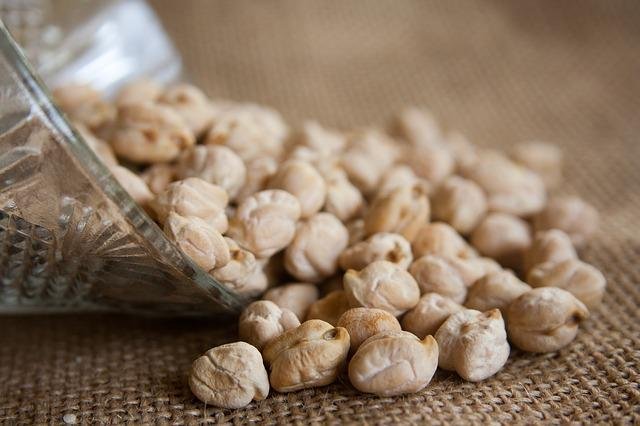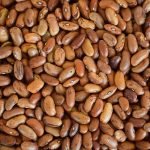
Chickpea flour is a very versatile food, rich in fiber and protein and suitable for celiacs and diabetics. Find out about ownership and how to do it at home.
Chickpea flour is a product deriving from the grinding of dried chickpeas, a very widespread legume both in Italy and in various countries of the world, so much so that it is the third most abundant crop of legumes, after soy and beans.
The cultivation of chickpeas is a very ancient practice, which also predates the Roman Empire; the use of chickpea flour , on the other hand, has become widespread especially in recent years, thanks to the considerable protein content that makes this flour a great ally in vegetarian or vegan diets.
Chickpea flour: calories and nutritional properties
As you will have read in the previous paragraph, chickpea flour comes from the very fine grinding of the chickpeas themselves. Generally the most commonly found flour on the market derives from foreign chickpeas, and it is much more difficult to find an Italian chickpea flour, as we will see later in one of the next paragraphs.
Its nutritional properties obviously depend on those of the chickpea from which they derive: like all legumes we find a fair amount of protein and a high amount of soluble fiber. Its consumption can therefore be beneficial for our health and the regular addition of chickpea flour in our diet can allow us to more easily reach the minimum amount of fiber suggested by the guidelines, equal to about 25 g per day. 100 g of chickpea flour contains, in fact, almost 14 g of fiber!
We also emphasize that chickpea flour is rich in some important minerals, which, like proteins, must be kept under control when following a vegetarian or vegan diet: iron and calcium.
As for the energy intake, it is not a food low in calories: we remind you that, like all legumes, it also contains a fair amount of carbohydrates, even if it is low in fat. In particular, the calories of chickpea flour are 363, a value very similar to traditional 00 flour (which is about 350 Kcal / 100gr), the most used in cooking.
The table below shows the nutritional values of chickpea flour according to the indications of the database.
Nutritional values per 100g of chickpea flour:
- Kcal: 363
- Proteins: 21.8 g
- Lipids: 4.9 g
- Carbohydrates: 54.3 g
- Fiber: 13.8 g
- Iron: 6.1 mg
- Soccer: 117 mg
- Sodium: 6 mg
- Phosphorus: 299 mg
- Zinc: 3.3 mg
- Potassium: 800 mg
- Vitamin B1: 0.36 mg
- Vitamin B2: 0.14 mg
- Vitamin B3: 1.7 mg
- Vitamin B6: 0.53 mg
- C vitamin: 5 mg
- Total folate: 180 ug
Chickpea flour: health benefits
The properties of chickpea flour are many as regards human health, both for the benefits that the chickpea itself brings, and for the advantages of the partial replacement of cereal flours with that of chickpeas.
✓ Improvement of the nutritional value
The addition of chickpea flour to a baked product such as bread, snacks and chips, is able to improve the nutritional profile of the product itself, but above all it is able to reduce the content of acrylamide (an anti-nutritional substance) in food.
✓ Cardiovascular risk
The consumption of chickpeas is able to reduce the level of total cholesterol , serum lipids and in general the total cardiovascular risk. This benefit is due to some components of the chickpea, which are also kept in the flour. In particular we are talking about fibers, polyunsaturated fatty acids and other bioactive compounds, which are able to reduce blood lipid levels and improve insulin sensitivity. Phytosterols, also present in chickpea flour, are also able to inhibit the oxidation of LDL cholesterol (process underlying the formation of atherosclerotic plaques) and to maintain the elasticity of the arterial walls.
✓ Diabetes
The consumption of chickpeas and chickpea flour, thanks to the presence of resistant starch and amylose, correlates with a lower risk of developing diabetes and an improvement in insiline resistance. The presence of amylose makes glucose less available for intestinal digestion, thus allowing a slower passage of glucose into the blood and a consequent lower rise in blood sugar. The consumption of resistant starch, on the other hand, has been shown to lead to a better benefit in terms of insulin sensitivity.
✓ Tumor pathologies
Chickpea flour contains many compounds that appear to be beneficial in cancer prevention. In particular, we can mention butyrate, a short-chain fatty acid, which is produced by our bacterial flora in the colon following the intake of chickpeas with the diet. Butyrate has been linked to a lower incidence of colorectal cancer as it is able to inhibit cell proliferation. Other important compounds are phytosterols and saponins : in studies performed on rats, these compounds were associated with a lower incidence of colon cancer. Chickpeas are also rich inantioxidants such as lycopene and carotenoids, which may have a protective role in the development of cancer.
✓ Constipation
Frequently the inclusion of chickpeas and their flour in the diet, can improve intestinal regularity, understood as frequency and ease of defecation, and the consistency of the stool.
✓ Weight loss
By improving the metabolic profile and increasing the sense of satiety thanks to the important fiber content, chickpeas are a friendly food for anyone who wants to lose weight through a balanced diet.
Chickpea flour: how to use it in the kitchen
In the kitchen, chickpea flour can be used for numerous preparations, either alone or mixed with other flours or cereals. When preparing your dishes, keep in mind that this flour is always much more satiating than the most commonly used cereal flours.
This flour can also be added to wheat flour for the production of bread: in this sense, research suggests adding about 10% on the finished product to obtain a product similar to that obtainable without this addition. A greater quantity of chickpea flour, in fact, would make it more difficult to process the dough.
However, it should be noted that the greater difficulty in processing can be compensated for by the nutritional characteristics of the final product, which would thus be richer in proteins, fibers and antioxidant compounds. The chickpea flour also acts as a thickener and in some recipes you can use chickpea flour instead of eggs, for example in the preparation of a vegan “omelette”.
Chickpea flour: 10 practical ideas for using it in recipes
The ingredient we are talking about in this article is extremely versatile and is suitable for very different preparations, some typical of the Italian tradition and others more unknown. By reading the next paragraph we will discover together how to use chickpea flour in everyday life. Let’s see together some recipe ideas with chickpea flour to organize a meal based on this ingredient.
1. Chickpea hummus
The chickpea hummus can be prepared, as well as with cooked chickpeas, with the flour itself, adding water, tahini sauce, lemon juice and extra virgin olive oil and cooking all these ingredients together. The final result will be a very tasty sauce, which we can embellish with spices or aromatic herbs as we wish and which we can use for the preparation of bruschetta or for dressing raw vegetables.
2. Chickpea porridge
The chickpea farinata is one of the typical recipes of the Italian tradition, very simple to make even at home. The necessary ingredients are very few: in addition to chickpea flour they serve extra virgin olive oil, water, salt and (to taste) rosemary. Baking the ingredients in the oven will result in a thin savory pie that can be used as an appetizer or second course.
3. Panella
The pan is also a typical dish of the Italian tradition, and in particular of the Sicilian one. In Sicily, the pan is one of the best known “walking foods”. Generally this square pancake is prepared fried and accompanied with bread, in the traditional “pane e panelle”.
4. falafel
This food is not typical of the tradition, but it has spread widely in Italy in recent years. These are meatballs created with chickpea flour and fried. Starting from this Middle Eastern recipe, many variations were born, more or less healthy: for example you can add grated carrots to the mixture and prefer cooking in the oven instead of frying!
5. Hamburger with chickpea flour
Another second course idea that we can also propose to children are burgers prepared with chickpea flour and vegetables, such as spinach or zucchini. For their preparation we will have to combine the chickpea flour with water, the chosen vegetables and a little bread left to soak. Delicious on their own, accompanied by a fresh salad, or with a homemade mayonnaise!
6. Omelette without eggs
As we anticipated in a previous paragraph, chickpea flour can also be used as a thickener and in some recipes it can be substituted for eggs. The procedure for the preparation of the omelette is similar to that of the chickpea porridge, but in this case we can indulge ourselves with the additions just like we would do with a real omelette: we can add onions, leeks, courgettes, but also cold cuts or cheeses! In another variant, chickpea flour is mixed with other cereal flours, for a complete and balanced vegan meal.
7. Crepe with chickpea flour
Chickpea flour can be used in place of other flours for the preparation of crepes or pancakes. The final result, which for example can also be included in breakfast, will be very satiating and rich in proteins. An idea for all those who are always hungry during the morning!
8. Gnocchi with chickpea flour
Another dish in which it is easy to replace more traditional flours with chickpeas are gnocchi. The preparation of potato gnocchi is always the same, but we can partially or totally replace the wheat flour with that of chickpeas. The result will once again be richer in protein and more satiating!
9. Cookies with chickpea flour
The chickpea flour can also be adapted to the preparation of sweet recipes. An example are biscuits, but in this case there is no single recipe and we can indulge ourselves with the tests. We remind you that chickpea flour is already a thickener and therefore it is not necessary to add eggs as well. It goes well with both dried fruit and chocolate chips!
10. Cake with chickpea flour and chocolate
The recipe for the cake prepared without eggs but with chickpea flour and chocolate is now a very widespread recipe, also thanks to the extreme ease of preparation. In addition to the two main ingredients, just add butter or olive oil to taste, milk and sugar. This cake can also be consumed by people with celiac disease and, if we replace sugar with a wholemeal sugar or a sweetener, it could also be a dessert suitable for diabetics!






